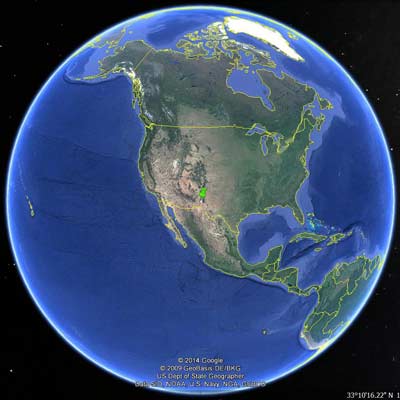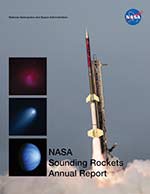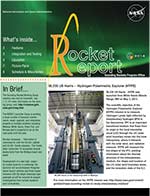
36.293 UG CHAKRABARTI/U. OF MASS. LOWELL
Planet Imaging Concept Testbed Using a Rocket Experiment (PICTURE)
- Mission
- Vehicle
- Launch
- Photos
The Planet Imaging Concept Testbed Using a Rocket Experiment (PICTURE) was designed to obtain a direct image of a planetary environment around another star. The study of extrasolar planets is one of the most exciting research endeavors of modern astrophysics. Most of these planets have been discovered through the radial velocity and transit measurement techniques. A wide variety of other techniques have since been employed and/or conceived – from microlensing to direct imaging. While the list of known planetary systems continues to grow, very few direct images of these systems have been taken.
PICTURE observed the planetary environment around Epsilon Eridani. Epsilon Eri is a nearby (approx 3.2 pc) K2 V star whose estimated age is 0.5−1 Gyr. It is suggested that Epsilon Eri contains at least one planet and a substantial dust disk. A dust ring, with characteristics similar to the Kuiper belt, was discovered around this star in 1998. Based on the morphology of the ring structure, a hypothetical second planet (Epsilon Eri c) has also been suggested. The radial velocity detection of Epsilon Eri b indicates a highly eccentric (e ! 0.61 ±0.04) orbit with a approx. 7 year period. Astrometric observations reported its mass to be < 1.2 ± 0.33MJ. A population of exozodiacal dust grains, produced by colliding asteroids and shedding comets, also fills the Epsilon Eri planetary habitat. An important and yet unknown quantity is the relativebrightness of this dust compared to the planet, Epsilon Eri b. An overly bright population of dust may inhibit future attempts to image the planet. Observed infrared excess in the stellar spectrum has been used to infer the existence of two warm exozodiacal dust belts in the Epsilon Eri system at 3 AU and 20 AU. It is the primary goal of PICTURE to directly image this inner 3 AU dust belt in reflected visible light. This will provide a measurement of the dusty background to help guide future attempts to image the planet. If successful, this will be the first image of an dusty asteroid belt orbiting a Sun-like star at a distance similar to that of our own asteroid belt.
The Black Brant 9 is a two stage sounding rocket with a Terrier first stage and Black Brant second stage. The Black Brant 9 can reach altitudes of about 600 km. Payloads weighing from 400 to 1200 pounds can be flown.

The PICTURE mission was launched from White Sands Missile Range, New Mexico on November 24, 2015.


